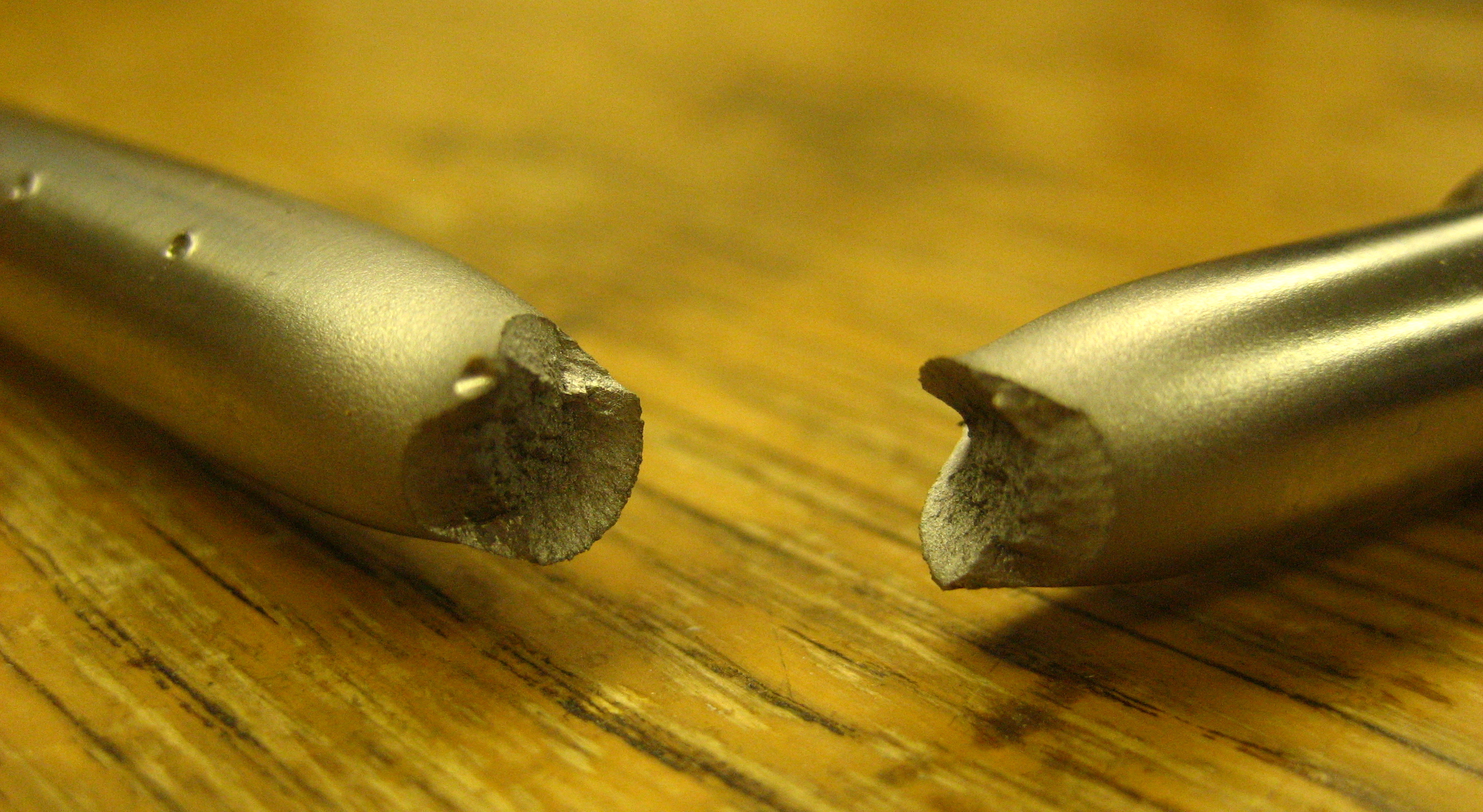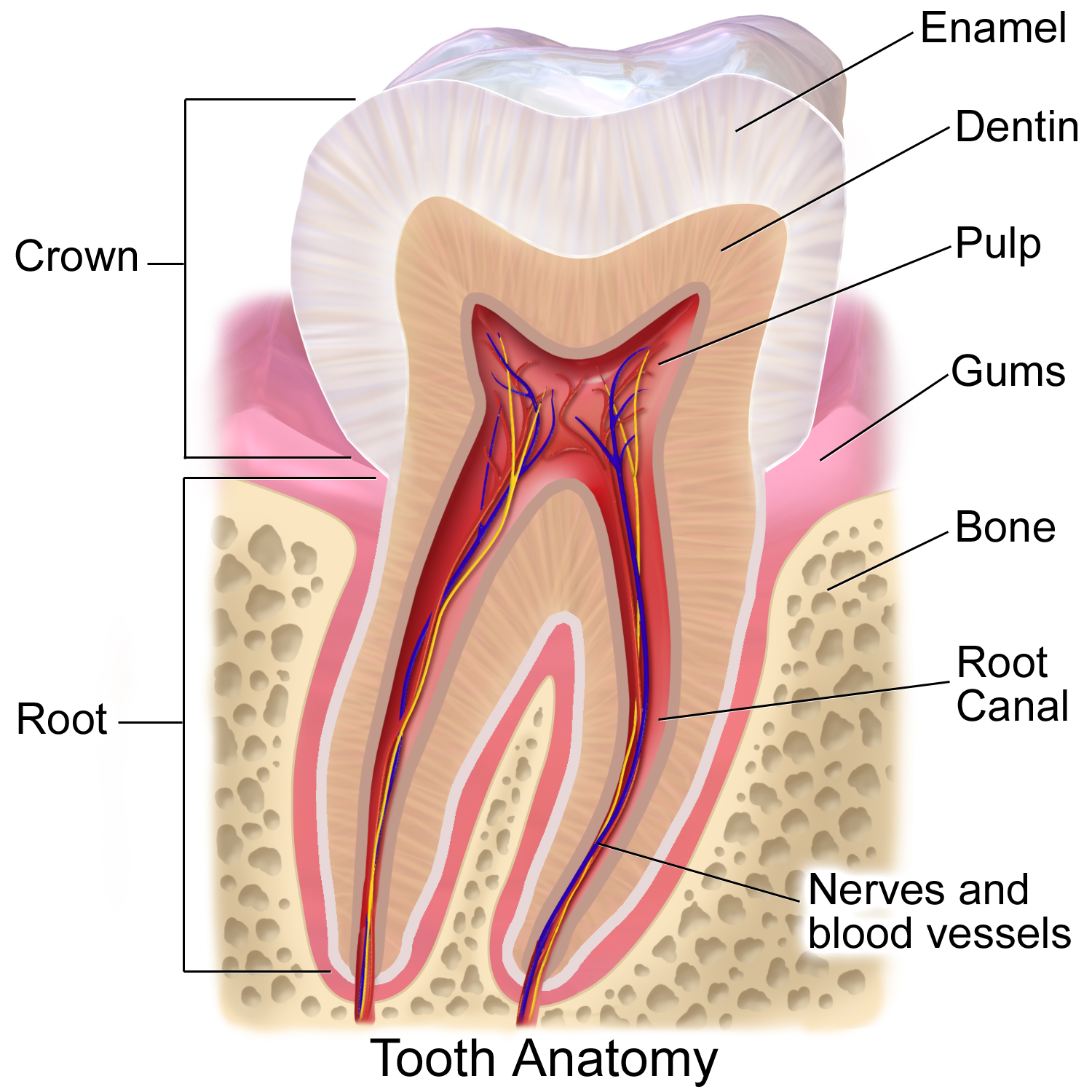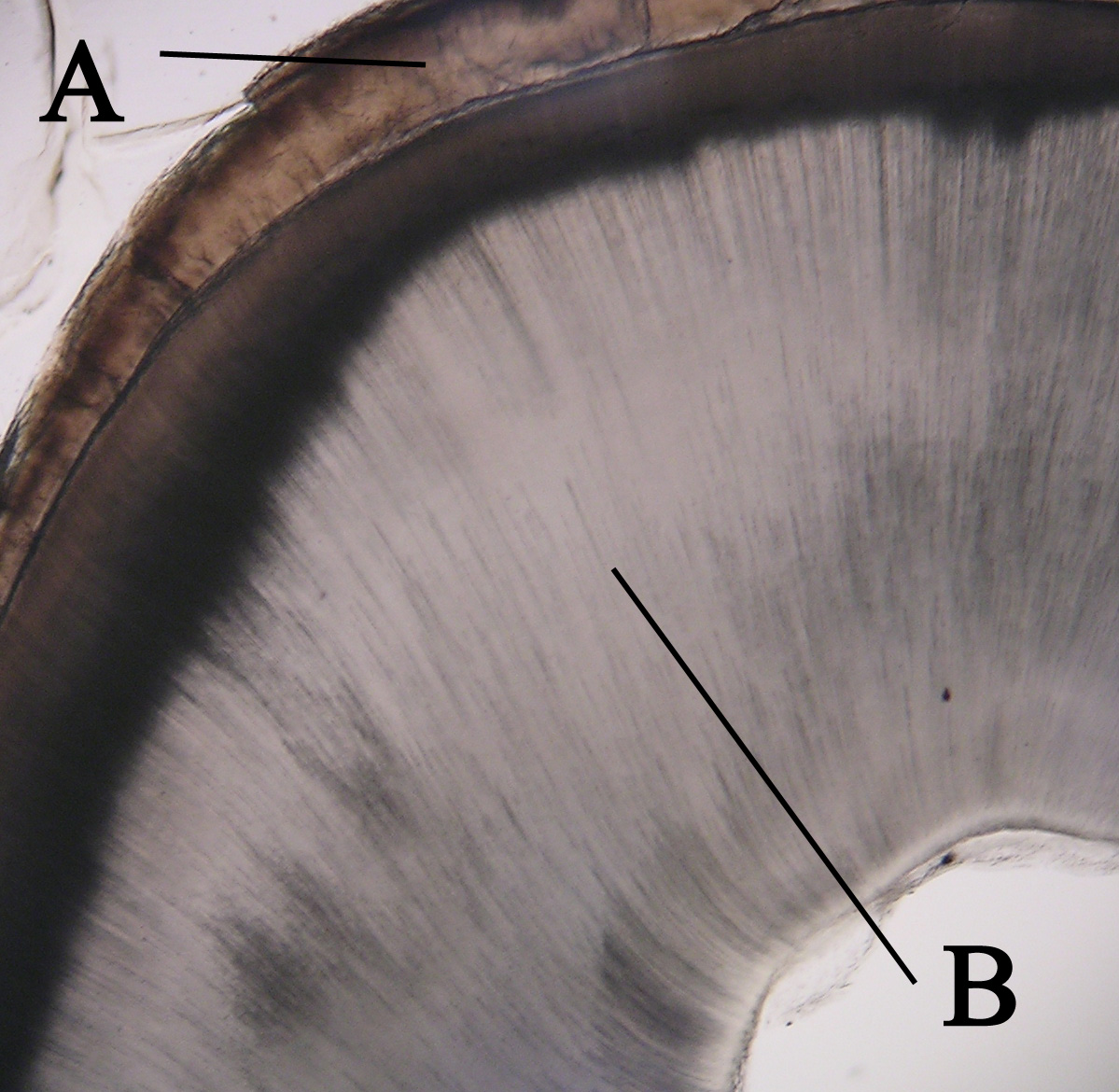|
Enamel Infraction
Enamel infractions are microcracks seen within the dental enamel of a tooth. They are commonly the result of dental trauma to the brittle enamel, which remains adherent to the underlying dentine. They can be seen more clearly when transillumination is used. Enamel infractions are found more often in older teeth, as the accumulated trauma is greatest. Enamel infractions can also be found as a result of iatrogenic Iatrogenesis is the causation of a disease, a harmful complication, or other ill effect by any medical activity, including diagnosis, intervention, error, or negligence. "Iatrogenic", ''Merriam-Webster.com'', Merriam-Webster, Inc., accessed 27 ... damage inadvertently caused by instrumentation during dental treatments. Treatment Minor infraction may not require any treatment, however major infraction may require treatment including smoothing, fluoride treatment and crown restoration. References Dental enamel Acquired tooth pathology {{Fractures ... [...More Info...] [...Related Items...] OR: [Wikipedia] [Google] [Baidu] |
Microcracks
Fracture is the separation of an object or material into two or more pieces under the action of stress. The fracture of a solid usually occurs due to the development of certain displacement discontinuity surfaces within the solid. If a displacement develops perpendicular to the surface, it is called a normal tensile crack or simply a crack; if a displacement develops tangentially, it is called a shear crack, slip band or dislocation. Brittle fractures occur with no apparent deformation before fracture. Ductile fractures occur after visible deformation. Fracture strength, or breaking strength, is the stress when a specimen fails or fractures. The detailed understanding of how a fracture occurs and develops in materials is the object of fracture mechanics. Strength Fracture strength, also known as breaking strength, is the stress at which a specimen fails via fracture. This is usually determined for a given specimen by a tensile test, which charts the stress–strain c ... [...More Info...] [...Related Items...] OR: [Wikipedia] [Google] [Baidu] |
Dental Enamel
Tooth enamel is one of the four major tissues that make up the tooth in humans and many other animals, including some species of fish. It makes up the normally visible part of the tooth, covering the crown. The other major tissues are dentin, cementum, and dental pulp. It is a very hard, white to off-white, highly mineralised substance that acts as a barrier to protect the tooth but can become susceptible to degradation, especially by acids from food and drink. Calcium hardens the tooth enamel. In rare circumstances enamel fails to form, leaving the underlying dentin exposed on the surface. Features Enamel is the hardest substance in the human body and contains the highest percentage of minerals (at 96%),Ross ''et al.'', p. 485 with water and organic material composing the rest.Ten Cate's Oral Histology, Nancy, Elsevier, pp. 70–94 The primary mineral is hydroxyapatite, which is a crystalline calcium phosphate. Enamel is formed on the tooth while the tooth develops within th ... [...More Info...] [...Related Items...] OR: [Wikipedia] [Google] [Baidu] |
Tooth
A tooth ( : teeth) is a hard, calcified structure found in the jaws (or mouths) of many vertebrates and used to break down food. Some animals, particularly carnivores and omnivores, also use teeth to help with capturing or wounding prey, tearing food, for defensive purposes, to intimidate other animals often including their own, or to carry prey or their young. The roots of teeth are covered by gums. Teeth are not made of bone, but rather of multiple tissues of varying density and hardness that originate from the embryonic germ layer, the ectoderm. The general structure of teeth is similar across the vertebrates, although there is considerable variation in their form and position. The teeth of mammals have deep roots, and this pattern is also found in some fish, and in crocodilians. In most teleost fish, however, the teeth are attached to the outer surface of the bone, while in lizards they are attached to the inner surface of the jaw by one side. In cartilaginous fi ... [...More Info...] [...Related Items...] OR: [Wikipedia] [Google] [Baidu] |
Dental Trauma
Dental trauma refers to trauma (injury) to the teeth and/or periodontium (gums, periodontal ligament, alveolar bone), and nearby soft tissues such as the lips, tongue, etc. The study of dental trauma is called dental traumatology.''Textbook and Color Atlas of Traumatic Injuries to the Teeth'', Fourth Edition, edited by Andreason J, Andreasen F, and Andersson L, Wiley-Blackwell, Oxford, UK, 2007 Types Dental injuries Dental injuries include: * Enamel infraction * Enamel fracture * Enamel-dentine fracture * Enamel-dentine fracture involving pulp exposure * Root fracture of tooth Periodontal injuries * Concussion (bruising) *Subluxation of the tooth (tooth knocked loose) * Luxation of the tooth (displaced) **Extrusive ** Intrusive **Lateral * Avulsion of the tooth (tooth knocked out) Injuries to supporting bone This injury involves the alveolar bone and may extend beyond the alveolus. There are five different types of alveolar fractures: * Communicated fracture of ... [...More Info...] [...Related Items...] OR: [Wikipedia] [Google] [Baidu] |
Dentine
Dentin () (American English) or dentine ( or ) (British English) ( la, substantia eburnea) is a calcified tissue of the body and, along with enamel, cementum, and pulp, is one of the four major components of teeth. It is usually covered by enamel on the crown and cementum on the root and surrounds the entire pulp. By volume, 45% of dentin consists of the mineral hydroxyapatite, 33% is organic material, and 22% is water. Yellow in appearance, it greatly affects the color of a tooth due to the translucency of enamel. Dentin, which is less mineralized and less brittle than enamel, is necessary for the support of enamel. Dentin rates approximately 3 on the Mohs scale of mineral hardness. There are two main characteristics which distinguish dentin from enamel: firstly, dentin forms throughout life; secondly, dentin is sensitive and can become hypersensitive to changes in temperature due to the sensory function of odontoblasts, especially when enamel recedes and dentin channels b ... [...More Info...] [...Related Items...] OR: [Wikipedia] [Google] [Baidu] |
Transillumination
Transillumination is the technique of sample illumination by transmission of light through the sample. Transillumination is used in a variety of methods of imaging. Microscopy In microscopy transillumination refers to the illumination of a sample by transmitted light. In its most basic form it generates a bright field image, and is commonly used with transillumination techniques such as phase contrast and differential interference contrast microscopy. Medicine In medicine transillumination generally refers to the transmission of light through tissues of the body. A common example is the transmission of light through fingers, producing a red glow due to red blood cells absorbing other wavelengths of light. Organs analysed include the sinuses, the breasts and the testes. It is widely used by pediatricians to shine light in bodies of infants and observe the amount of scattered light. Since their skeleton is not fully calcified, light can easily penetrate tissues. Common examples of ... [...More Info...] [...Related Items...] OR: [Wikipedia] [Google] [Baidu] |
Iatrogenic
Iatrogenesis is the causation of a disease, a harmful complication, or other ill effect by any medical activity, including diagnosis, intervention, error, or negligence. "Iatrogenic", ''Merriam-Webster.com'', Merriam-Webster, Inc., accessed 27 Jun 2020. First used in this sense in 1924, the term was introduced to sociology in 1976 by Ivan Illich, alleging that industrialized societies impair quality of life by overmedicalizing life."iatrogenesis" ''A Dictionary of Sociology'', . updated 31 May 2020. Iatrogenesis may thus include mental suffering via medical beliefs or a practitioner's statements. Some iatrogen ... [...More Info...] [...Related Items...] OR: [Wikipedia] [Google] [Baidu] |
Dental Enamel
Tooth enamel is one of the four major tissues that make up the tooth in humans and many other animals, including some species of fish. It makes up the normally visible part of the tooth, covering the crown. The other major tissues are dentin, cementum, and dental pulp. It is a very hard, white to off-white, highly mineralised substance that acts as a barrier to protect the tooth but can become susceptible to degradation, especially by acids from food and drink. Calcium hardens the tooth enamel. In rare circumstances enamel fails to form, leaving the underlying dentin exposed on the surface. Features Enamel is the hardest substance in the human body and contains the highest percentage of minerals (at 96%),Ross ''et al.'', p. 485 with water and organic material composing the rest.Ten Cate's Oral Histology, Nancy, Elsevier, pp. 70–94 The primary mineral is hydroxyapatite, which is a crystalline calcium phosphate. Enamel is formed on the tooth while the tooth develops within th ... [...More Info...] [...Related Items...] OR: [Wikipedia] [Google] [Baidu] |





